Living
GLAA celebrates 40 years
Activists move from the street to the suite after 4 decades of work
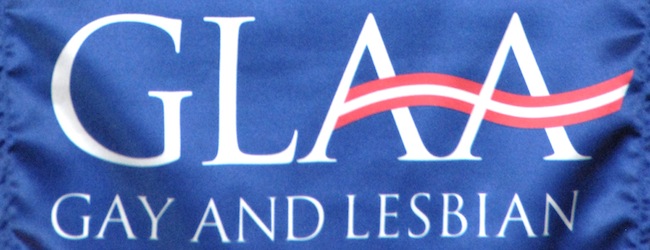
Frank Kameny remembers seeing Paul Kuntzler, his campaign manager on a 1971 bid for Congress, walk into Temple Sinai on Military Road in Washington with large reams of paper rolled under each arm and an elated look on his face.
Kameny, who founded the gay liberation movement in D.C. after being fired from the federal government in 1957, needed 5,000 signatures to get on the ballot. With the late February deadline looming, the group only had about 1,300. Realizing outside help was needed, Kameny and Kuntzler thought a gay group in New York whom they found to be one of the few “getting much of anything done,” as Kameny puts it, might be able to help. The group — Gay Activists Alliance of New York — sent two busloads of people to blanket the District one Sunday afternoon to secure signatures.
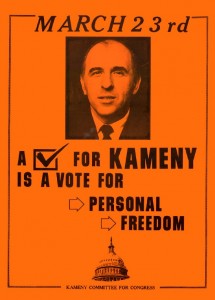
A vintage 'Kameny for Congress' poster from 1971. This campaign inspired the launch of GLAA. (Image courtesy of Rainbow History Project)
A dance was held that night at the Temple and when Kuntzler arrived, the group knew it was home free. They had about 7,700 signatures — plenty to get Kameny on the ballot. The “Kameny for Congress” campaign ended with the candidate coming in fourth in a six-way race. Though he lost, the 1,900 votes he secured while running as a then-unheard-of openly gay candidate, galvanized local activists.
Kameny’s own Mattachine Society was fading as members began to find its formality anachronistic in the Vietnam era. And the D.C. Gay Liberation Front was too radical for some others. The Kameny campaign activists were so impressed with the GAA New York group, they used about $400 left in their coffers after the election to visit the Big Apple and find out how the group operated.
By about the third week in April, a D.C. chapter was formed in the apartment of Jim McClard, the local group’s first president. While the New York group folded about a decade later, Washington’s Gay Activist Alliance is celebrating its 40th anniversary this month (in 1986 then-president Lorri Jean — now head of Los Angeles’ mammoth LGBT Community Center — insisted on changing the name to Gay and Lesbian Activists Alliance, or GLAA as it is commonly known). It’s the oldest continuously active gay organization in the country.
The group celebrates Wednesday at the Washington Plaza Hotel in Thomas Circle. Kameny, now 85, will give his founder’s Champagne toast, as has become GLAA tradition. And the group will bestow its annual Distinguished Service Awards to six local activists. Minimum donations are $50. Visit glaa.org for more information.
Kameny says the group — which lists pages of political gains on its website — has thrived under strong leadership.
“Some of it has been sheer good luck,” he said. “Throughout the ’70s, ’80s and beyond, the group had a string of presidents who were absolutely superb. I said that frequently back then and I still say it. One after another, there were just a lot of great people. There may have been one or two duds, but they really had good people, good officers who kept the organization going. They kept it effective and were very dedicated.”
The group’s first effort was also its only formal collaboration with Mattachine and the local Gay Liberation Front — a protest of the 1971 American Psychiatric Association’s convention held that year in Washington. Though GLAA disavowed the use of force and worked to “act within the existing order,” that first effort involved storming the conference and seizing the microphone in an effort to convince APA brass that gays were not mentally ill.
“We couldn’t possibly be trusted with government secrets and security clearances if we were mentally disturbed,” Kameny said.
He chuckles at the tactics now and says the groups soon went in their own direction — GLAA with Robert’s Rules of Order for its meetings, a gay-specific focus and a strong commitment to non-partisanship.
“I used to attend the GLF meetings,” Kameny said. “They seemed to just drone on endlessly and you had the impression there was a small group meeting in the attic who really ran things. And they tried to tie in all the issues of the day. My feeling has always been if you try to do everything you end up doing nothing very well.”
Former president Craig Howell, who joined in 1973 and has been active ever since, admits the heavily political nature of the group’s work limits its appeal, but said its track record over 40 years speaks for itself.
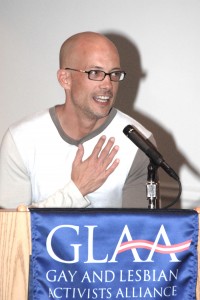
The late Jeff Coudriet, a former GLAA president, speaks at the group's 2007 awards. (Blade file photo by Henry Linser)
“There’s always been a small number doing most of the work,” Howell said. “Many times we’d just be sitting there in the living room on [former president] Bob Carpenter’s couch. If we had four or five at a meeting, that was considered good. It’s always been very wonky, so that makes for limited people, but the devil is in the details and you have to go through that trivia to get what you want. But it’s worth paying the price.”
The group counts among its victories:
• Council’s 1973 passage of Title 34, which made Washington the first major U.S. city to outlaw discrimination against gays in housing, employment and public accommodations.
• Kameny’s 1975 appointment to the city’s Human Rights Commission, a first
• A 1978 gay rights rally, the largest of its kind to that time, to protest anti-gay singer Anita Bryant
• A 1979 public service campaign that required a court fight to allow “Someone you know is gay” posters to be placed at Metro stations
• Former president Mel Boozer’s 1980 speech at the Democratic National Convention
• Repeal of D.C.’s sodomy law in 1981
• A 1982 commitment from D.C. police for fair treatment of gays
• A 1986 Council bill that prohibited insurance companies from denying coverage to HIV-positive residents
• 1990 hate crimes legislation
• A 1992 domestic partnership bill
• A 1999 settlement in the Tyra Hunter case, a trans resident who was shunned and ridiculed by EMS workers following a car accident. She died in 1995.
• Part of a broad coalition that opposed an exception from the D.C. Department of Corrections from requirements in the D.C. Human Rights Act in 2008
• Marriage for same-sex couples in 2009
Current president Mitch Wood says the group is “really a labor of love” and that its non-partisan nature “allows us to build bridges across the political spectrum.”
It’s all volunteer and operates on a small budget of about $10,000 per year, most of which goes to maintain its website and blog and stage its annual awards reception. Money comes from nominal member dues — $25 per year — and ticket sales and donations. The group meets twice monthly for about 90 minutes, mostly at the Charles Sumner School but sometimes at the Wilson building. Meetings are usually followed by dinner and drinks, often at Dupont Italian Kitchen. New members are always welcome.
Among GLAA’s signature work is its candidate ratings. Members always point out the ratings should not be seen as endorsements, but they rank those running for local office based on questionnaire responses and members’ knowledge of the candidates’ records on gay issues, to rank them on a scale that runs from -10 to +10.
“Usually in every election cycle somebody working with one of the candidates or another gets unhappy that so-and-so didn’t get a high enough rating,” Rick Rosendall, the group’s vice president for political affairs and a former president, says. “So they’ll make some snarky comments, but because we back up so thoroughly how we arrive at our ratings, we can show the point breakdowns and their responses to the questions, so they know what went into the ratings. It’s a very open process, not some beauty contest score with us up in some ivory tower.”
Over the years, the group’s ratings gained heft. Though he notoriously voted against the marriage bill, Council member Marion Barry initially scored a -10 during his run for mayor in the early ’80s. The low score led him to work with the local gay community and for years he was seen as a supportive public official.
Rosendall said the group’s decades of groundwork pays off even in unlikely places. He cites the two Council members — Barry and Yvette Alexander — who voted against marriage, and also Council member Harry Thomas Jr., who opposed the infamous club relocation bill for gay bars in 2007.
“They’ve all at various times emphasized their pro-gay credentials,” Rosendall said. “Even though Barry did speak at one of Bishop [Harry] Jackson’s rallies in Freedom Plaza, it was a far cry from the hateful rhetoric you hear from state legislators. … And GLAA can take some of the credit for that, but the community has played a key role in this as well. … It’s not just a handful of policy wonks, it’s our community who has been active in this city since before home rule.”
Gay D.C. Council member Jim Graham, who’s received many perfect scores from the group, said he respects GLAA even when he occasionally disagrees with members.
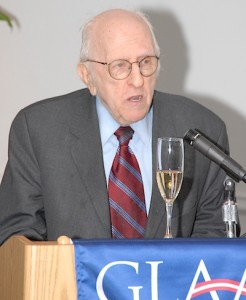
Frank Kameny giving his traditional GLAA toast at the group's 2007 awards. (Blade file photo by Henry Linser)
“They put an enormous amount of sincere effort into it,” Graham said. “I mean they really do. It’s not anything they do in a casual way. And most recently I’ve been getting pretty much 10s, so you’re always happy with a perfect score.”
Rosendall says one big change over the years has been what he calls “street versus suite” activism. The group has moved away from demonstrations largely because it’s usually given a seat at the discussion table.
“As you get more power and influence, there’s less need to be standing outside,” he said. “That doesn’t mean there isn’t a place for groups like GetEqual. Different groups are good at different things. I like to say we’re working different parts of the vineyard.”
The group has, at times, faced criticism. Within the last four years or so, some activists, including Michael Crawford, said the group wasn’t moving fast enough on the marriage issue.
Rosendall said GLAA prides itself on avoiding excessive intramural fighting among other local activist groups.
“We really try not to let things deteriorate too much into personality and battles we don’t need,” he said. “We’ve tried to keep our collective eyes on the prize and the marriage victory demonstrated that. There’s no way we would have been doing all this policy work and building coalitions if we weren’t wanting it to happen. We just wanted to make sure it stuck.”
Graham said the group deserves praise for its tenacity, especially considering the era in which it launched.
“It’s difficult to imagine how very important and pioneering they were back in 1971,” Graham said. “In this day and age when we’ve made such progress, it’s important that we pause and acknowledge those who were there 40 years ago at a time when things were so very different. … The young men and women in our community really need to stop and realize this. We’re here because of these folks.”

Some vehicles age quietly — but not muscle cars.
For 2026, the Chevrolet Corvette tightens its focus, fixes one glaring flaw (the previously dowdy interior) and flaunts a futuristic design. The Dodge Charger, on the other hand, is loud and proud, daring you to ignore its presence at your peril.
CHEVROLET CORVETTE
$73,000-$92,000
MPG: 16 city/25 highway
0 to 60 mph: 2.8 seconds
Cargo space: 13 cu. ft.
PROS: Awesome acceleration. Race-car feel. Snazzy cabin.
CONS: No manual transmission. No rear seat. Tight storage.
Finally, the Chevrolet Corvette feels as good inside as it looks flying past you on the freeway. That’s thanks to the classy, completely redesigned cabin. Gone is the old, polarizing wall of buttons in favor of a sleeker, three-screen cockpit. There’s a large digital gauge cluster, a wide infotainment screen angled toward the driver, and a marvy new auxiliary display. Everything is modern and a bit glitzy — but in a good way.
Fit and finish are higher quality than before, and the controls are more intuitive. Chevy’s Performance App is now standard across trims, offering real-time data for drivers who enjoy metrics as much as momentum. And the new interior color schemes, including slick asymmetrical options, let you express yourself without screaming for attention—confidence, not obnoxious bluster.
As for handling, the steering is quick and sure, body control is exceptional, and acceleration is blazingly fast. A mid-engine layout also delivers sublime balance.
Three trim options, including the V8-powered Stingray, the E-Ray (also with a V8 but paired with electric all-wheel drive), and the Z06 and ZR1 variants for racing devotees.
(Note to self: For a truly mind-blowing experience, there’s the new 1,250-horsepower ZR1X all-electric supercar that goes from 0 to 60 mph in less that 2 seconds and is priced starting at $208,000.)
Yes, the ride in any of these Corvettes can be firm. And visibility is, well, rather compromised. But this supercar is a total Dom, not a timid sub. Think Alexander Skarsgard in “Pillion,” and you get the picture.
DODGE CHARGER

$52,000-$65,000
MPG: 16 city/26 highway
0 to 60 mph: 3.9 seconds
Cargo capacity: 22.75 cu. ft.
PROS: Choice of gas or EV power. Modern tech. Spacious cabin.
CONS: No V8 engine (yet). Soft steering. Less-than-lithe cornering.
Everything old is new again for the Dodge Charger. The automaker initially was phasing out gas-powered models in a shift to electric vehicles but then quickly pivoted back to include gas engines after yo-yo regulatory changes this year from, well, the yo-yos in the White House.
Powerful twin-turbo engines in the R/T and Scat Pack trims produce up to 550 horsepower. These models come standard with all-wheel drive but can be switched to rear-wheel drive for classic muscle-car antics when the mood strikes you.
At the same time, Dodge still offers the electric Charger Daytona, delivering up to 670 horsepower and ferocious straight-line acceleration.
The Charger’s aggressive design, massive digital displays and practical hatchback layout carry over, reinforcing its ability to be both a performance diva and everyday companion. With the larger-than-expected storage space, I appreciated being able to fit a boatload of groceries in the trunk during a Costco run.
New wheel designs, paint choices and trim variations help you visually distinguish between gas and electric Chargers. But no matter the model, each one feels decisive and deliberate on the road. Commuting in stop-and-go traffic during rush hour is fine, but this street machine excels at high-speed cruising on the freeway.
The turbo six-cylinder engine delivers muscular torque with less drama than the old V8s, but still with plenty of urgency. The electric Daytona version is a different kind of thrill, with its instant, silent thrust that feels like it could almost launch you to the moon.
Steering is stable but not exactly crisp, and the Charger’s weight makes it less lithe—and lively—than other muscle cars, especially when navigating tight corners.
But that’s just fine with me. Like Bea Arthur as Dorothy in “The Golden Girls,” this no-nonsense muscle car is proud to be big, bold and brassy.
Real Estate
Top buyer-friendly markets for the LGBTQ community
Home should be a place where you can be fully yourself
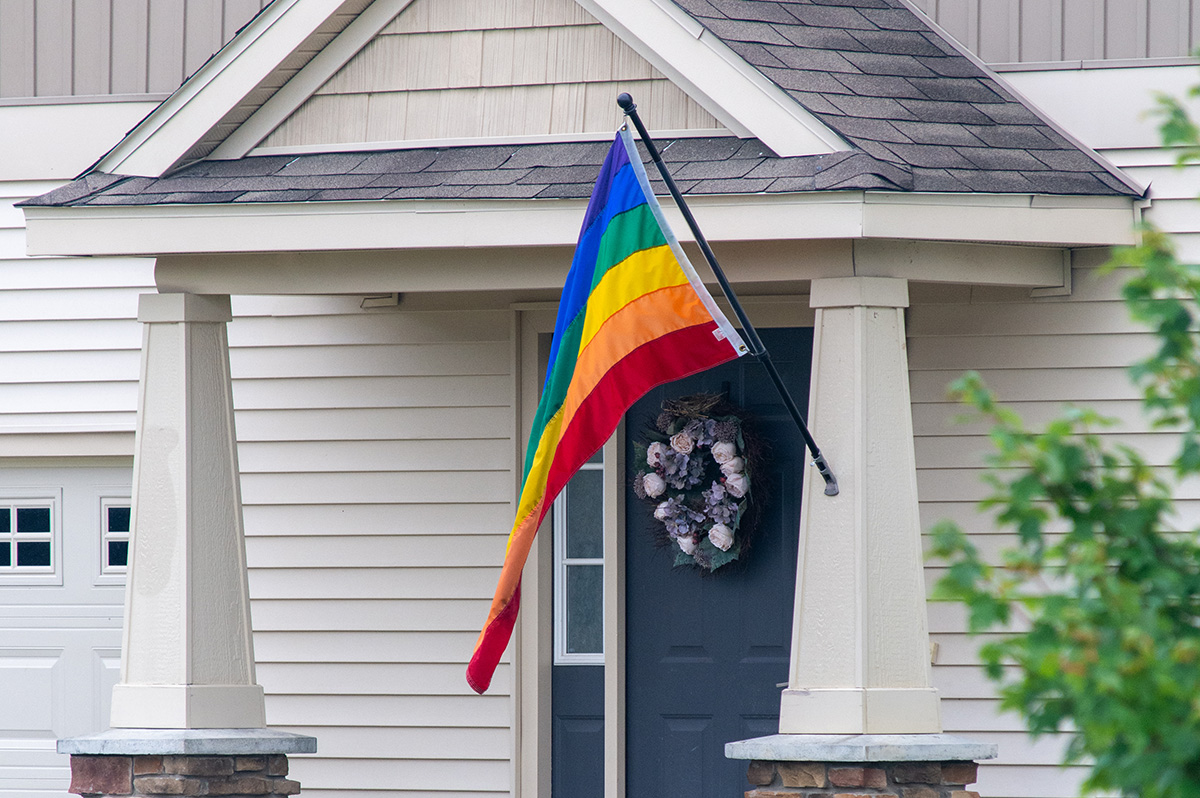
Buying or selling a home is one of the most meaningful financial and emotional decisions a person can make. For LGBTQ+ individuals and families, that journey can also come with unique considerations — from finding truly inclusive neighborhoods to working with professionals who understand and respect who you are.
The good news? Across the United States, there are increasingly buyer-friendly housing markets where LGBTQ+ home buyers and sellers can find opportunity, affordability, and community. When paired with the right representation, these markets can offer not only strong financial value, but peace of mind.
For more than 30 years, GayRealEstate.com has been the leading source of LGBTQ+ real estate representation, helping LGBTQ+ buyers and sellers connect with vetted, LGBTQ+ friendly real estate agents who understand the nuances of fair housing, legal protections, and inclusive service.
Below, we explore top buyer-friendly markets for the LGBTQ+ community, along with practical tips to help you navigate the process with confidence.
What Makes a Market Buyer-Friendly?
A buyer-friendly market isn’t just about lower prices — especially for LGBTQ+ home buyers. It often includes:
- Increased housing inventory (more choices, less pressure)
- Slower price growth or stabilized pricing
- Greater negotiating power for buyers
- Established or emerging LGBTQ+ communities
- Local protections and inclusive policies
- Access to LGBTQ+ friendly real estate agents and resources
Markets that combine affordability with inclusivity can be especially attractive for first-time gay home buyers, same-sex couples, and LGBTQ+ families planning for long-term stability.
Top Buyer-Friendly Markets for LGBTQ Home Buyers
1. Austin & San Antonio, Texas
Once known for extreme competition, many Texas metros have shifted into more buyer-friendly territory due to increased inventory.
Why it works for LGBTQ+ buyers:
- Strong LGBTQ+ communities, especially in Austin
- More negotiating leverage than in prior years
- Diverse neighborhoods at varying price points
Tip: Texas does not have statewide LGBTQ+ housing protections, making it especially important to work with an experienced LGBTQ+ friendly realtor through GayRealEstate.com.
2. Columbus & Cincinnati, Ohio
Ohio cities continue to attract buyers looking for value without sacrificing culture or inclusivity.
Why it works:
- Lower median home prices
- Growing LGBTQ+ populations
- Strong healthcare, education, and job markets
These cities are particularly appealing for LGBTQ+ buyers relocating from higher-cost coastal markets.
3. Richmond, Virginia
Richmond has become a standout for LGBTQ+ home ownership thanks to affordability, history, and progressive growth.
Highlights:
- Inclusive local culture
- Buyer-friendly price trends
- Walkable neighborhoods popular with LGBTQ+ professionals
4. Minneapolis–St. Paul, Minnesota
The Twin Cities consistently rank high for LGBTQ+ quality of life and legal protections.
Why LGBTQ+ buyers love it:
- Strong anti-discrimination laws
- Stable home values
- Excellent resources for LGBTQ+ families
Minnesota offers one of the safest environments for LGBTQ+ home buyers and sellers navigating the real estate process.
5. Jacksonville & Tampa Bay, Florida
Florida remains complex for LGBTQ+ buyers, but some metros still offer strong buyer opportunity.
What to know:
- Increased inventory = more negotiating power
- Coastal lifestyle at lower cost than South Florida
- Local LGBTQ+ communities continue to grow
Because statewide protections vary, partnering with a GayRealEstate.com LGBTQ+ friendly real estate agent is essential.
Finding LGBTQ-Friendly Neighborhoods
Not every “affordable” neighborhood is inclusive — and safety, comfort, and belonging matter.
When searching for LGBTQ+ friendly neighborhoods:
- Look for visible LGBTQ+ organizations, events, and businesses
- Research local non-discrimination ordinances
- Ask your agent about lived experiences, not just statistics
- Talk to neighbors and local LGBTQ+ groups
Agents in the Gay Real Estate Network often provide insight that listing data alone cannot.
The Importance of LGBTQ Real Estate Representation
While fair housing laws exist, LGBTQ+ housing discrimination still happens — sometimes subtly, sometimes overtly.
Working with an LGBTQ+ friendly real estate agent helps ensure:
- Respectful communication
- Advocacy during negotiations
- Awareness of legal protections
- A safer, more affirming experience
GayRealEstate.com has spent over three decades building the most trusted network of gay realtors, lesbian real estate agents, and LGBTQ+ friendly real estate professionals nationwide.
Legal Protections Every LGBTQ Buyer and Seller Should Know
Federal protections now include sexual orientation and gender identity under the Fair Housing Act, but enforcement and local laws vary.
Before buying or selling:
- Understand your state and local protections
- Know how to document discriminatory behavior
- Work with professionals who take advocacy seriously
- Use trusted LGBTQ+ real estate resources
GayRealEstate.com agents are experienced in helping clients navigate these realities with confidence.
Tips for LGBTQ Home Buyers & Sellers
- Get pre-approved early to strengthen your buying position
- Interview agents and ask direct questions about LGBTQ+ experience
- Don’t ignore your instincts — comfort matters
- Plan long-term: community, schools, healthcare, and protections
- Use LGBTQ+-specific resources rather than generic searches
Buyer-friendly markets create opportunity — but representation creates security.
Whether you’re a first-time gay home buyer, a same-sex couple relocating, or an LGBTQ+ seller preparing for your next chapter, choosing the right market and the right representation makes all the difference.
For over 30 years, GayRealEstate.com has been the trusted leader in LGBTQ+ real estate, connecting buyers and sellers with professionals who understand the importance of inclusion, advocacy, and respect.
Your home should be more than a place to live — it should be a place where you can be fully yourself.
Scott Helms is president and owner of Gayrealestate.com.
Real Estate
Stress-free lease renewals during winter months
A season when very few tenants typically move
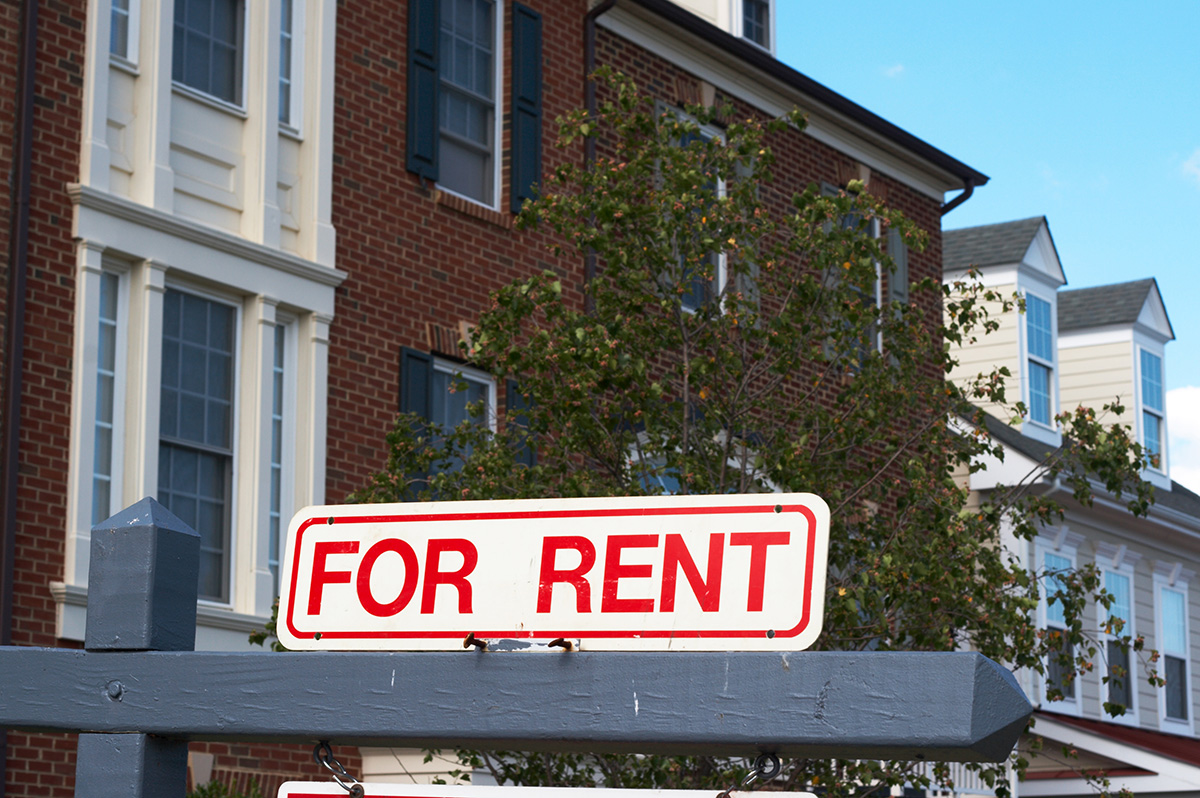
January has a way of waking everyone up. After weeks of holiday noise, travel, family visits, and a general blur of activity, the new year arrives with its usual mix of resolutions, optimism, and responsibility. People start looking at their calendars again. To-do lists reappear. And tucked away in there is something many tenants didn’t give much thought to in December, their lease renewal.
Renewals in winter matter more than most people realize. It is a season when very few tenants typically move. The weather is unpredictable, schedules are tight, and most people are trying to regain their footing after the holidays. Because of this, renewal conversations tend to be more productive and more grounded.
Many landlords think of spring and summer as the heart of leasing season, and while that’s certainly when moves are most common, winter renewals hold their own kind of importance. A well-timed renewal does more than keep a unit occupied. It provides predictability for the year ahead, strengthens relationships, and reduces the costly turnover that smaller landlords want to avoid.
In my experience, tenants who might hesitate during another time of year are often relieved to secure housing before the pressures of spring and summer begin. Uncertainty is one of the prime causes of unnecessary turnover. If tenants don’t hear from their landlord, they often start browsing listings “just in case,” or asking friends about other options. Once that door is opened, it can be hard to close. Initiating the renewal process early helps anchor tenants before doubts start creeping in.
Tenants often make clearer decisions in January than they would in November or December. During the holidays, people are distracted and stretched thin; emails are skimmed, not absorbed; and anything involving planning often gets deferred until “after the new year.” When tenants return home in January, they have a better sense of their plans, their budget, and their needs for the coming months. This makes it a much easier moment to start or restart a renewal conversation.
The practical reality is that most tenants don’t want to move in the winter. Who wants to haul furniture across icy sidewalks or deal with last-minute moving delays due to storms? Beyond the weather, January is a time when people are reorganizing finances, filing paperwork, and settling into routines. The thought of a major transition simply doesn’t fit. Landlords can use this natural reluctance to create a smoother, more collaborative renewal process.
One thing I’ve learned over the years is that clarity is a landlord’s best tool. Tenants don’t need lengthy explanations, legal jargon, or complicated attachments. They simply want to know:
- Are the terms changing?
- If so, how?
- What does their timeline look like?
- Would the landlord consider another set of terms?
A concise, well-laid-out renewal offer does two things. First, it demonstrates transparency, which builds trust. Second, it keeps the conversation focused and productive. When tenants understand exactly what’s being proposed, there is less back-and-forth, fewer misunderstandings, and a quicker path to a signed agreement.
Tenants are more receptive when they feel they’re being treated fairly and openly. If there’s a rent adjustment, a brief explanation helps tenants see the reasoning behind it, such as increased operating costs, significant maintenance completed during their stay or alignment with the market.
Lease renewals are moments of connection. The best landlord-tenant relationships are built over time through small exchanges, transparency, and mutual respect. Renewal season offers an opportunity to reinforce that.
A simple acknowledgement of the tenant’s care for the home or their timely payments can set a positive tone. Even a short note of appreciation signals that you see them not as a lease term, but as a partner in maintaining the property. These gestures cost very little but create a sense of goodwill that carries through maintenance requests, policy reminders, and everyday communication.
Many landlords underestimate how much tenants value being treated as individuals rather than account numbers. A thoughtful, personal touch during the renewal process can make a tenant feel recognizednand more inclined to stay.
Renewals aren’t only about securing another term lease.They’re also a natural moment to check in on the overall health of the property and the tenant’s experience. J anuary provides a quiet space to step back and ask:
• Are there maintenance concerns the tenant hasn’t mentioned yet or that have not been fully resolved?
• Is the property due for upgrades or any preventative work?
• Are there responsibilities or expectations worth revisiting?
These conversations don’t need to be long or formal, but they help prevent the small issues of one year from becoming the larger problems of the next. A tenant who feels heard is more likely to take good care of the home, communicate proactively, and renew again in future years.
While landlords must maintain structure and protect their assets, a bit of flexibility can go a long way during the renewal process. Tenants are often rebalancing budgets after holiday spending. Offering digital signatures, Having brief calls to clarify terms, being flexible, or a few extra days to make a decision can ease stress without compromising the landlord’s position.
Flexibility is about recognizing human realities. Most tenants appreciate being treated with patience and professionalism, and often reward that consideration with prompt decisions and smoother communication. There are many reasons why a full year renewal may not coincide with their plans. Being able to work out mutually agreeable renewal terms makes the solution a win for both parties.
For landlords, especially smaller ones, stability is the foundation of successful property investing. A vacant unit, even briefly, costs more than most people realize. There are marketing expenses, cleaning, repairs, lost rent, and the unpredictable timeline of finding the right new tenant. By contrast, securing a renewal with an existing reliable tenant protects cash flow, reduces risk, and creates predictability in planning.
January renewals, when handled well, deliver this stability right at the beginning of the year. They give landlords a clear roadmap for budgeting, maintenance scheduling, and forecasting. They also give tenants the security of knowing exactly where they stand, which reduces stress on both sides.
A lease renewal may seem like a small moment in the life of a property, but in practice, it shapes the experience of the year ahead. When the process is organized, honest, and respectful, it sets a tone that carries through every interaction until the next renewal date.
January is a time to consider leaning into this approach. The pace is slower, the mindset is clearer, and both landlord and tenant are ready to step into the year with more intention. A renewal handled thoughtfully now paves the way for a smoother, quieter, more predictable twelve months, something every landlord and every tenant can appreciate.
Scott Bloom is owner and senior property manager at Columbia Property Management.





















